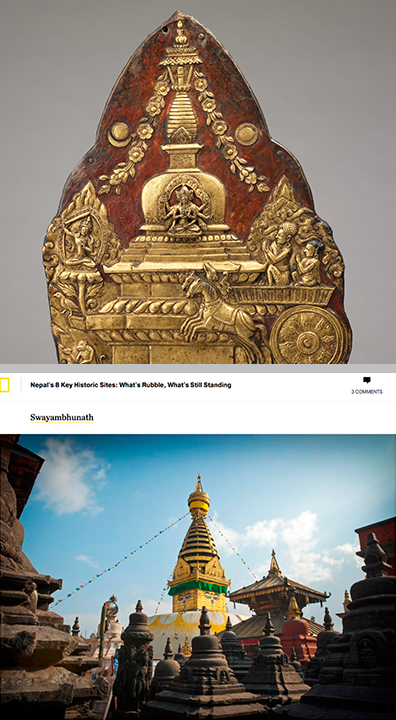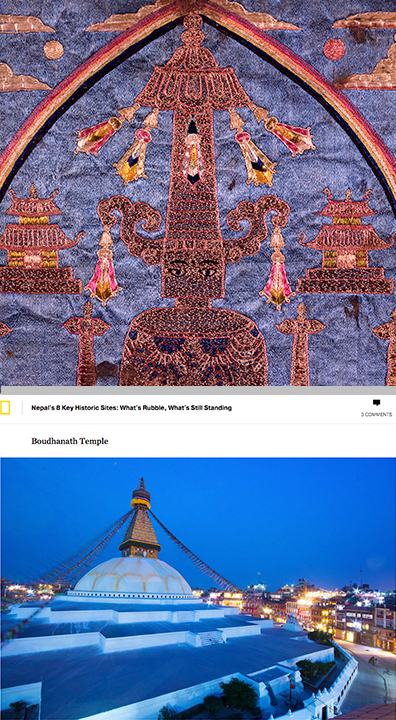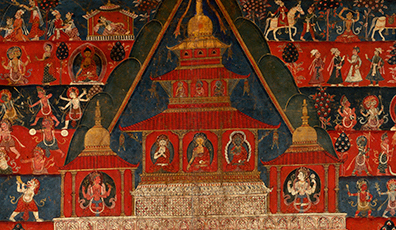
Recent articles from National Geographic, the Independent, and other publications have chronicled the state of Nepal’s most iconic historic sites. In an effort to provide cultural and historical context to these images, we’ve paired them with works from our collection, some dating as far back as the 18th century, that depict Nepalese landmarks.
Through this comparison of recent photos and details from artworks, we’ll highlight the significance of the structures that are still intact and pay tribute to the legacy of those destroyed by the earthquake.
Swayambhunath Stupa

In the artwork, the presence of the deity Manjushri at middle left and the monkey at the bottom left likely identifies the structure on the right as the famous Swayambhunath Stupa, popularly referred to as the “monkey temple”. Manjushri permeates Nepalese society and rituals, in this case he is depicted as part of the Chariot Ritual (bhimarata), the birthday celebration for a Nepalese elder of Kathmandu. The ritual is practiced by both Hindus and Buddhists and celebrated when an elder reaches the ripe age of 77 years, 7 months, 7 days, 7 hours, and 7 minutes. The Swayambhunath stupa survived the earthquake. However, the 7th-century temple adjacent to it, and the surrounding homes of the people who take care of the monument, collapsed.
Rato Macchendranath Temple

The monumental 1950 painting (above), one of the largest Nepalese scroll paintings (paubha) in the world, depicts the temple of Rato Macchendranath in present-day Patan in the Kathmandu Valley. The temple showcases the typically Nepalese architectural style, featuring eaves that look similar to a pagoda, topped by a stupa. The Rato Macchendranath temple, which was constructed in 16th century, has sustained significant damage. The image below shows the devastation of the town of Bungamati, where a second temple dedicated to Rato Macchendranath, and where the main image of the deity is housed for half the year, was reduced to rubble.
Boudhanath Temple

National Geographic reports that the 5th-century AD Boudhanath stupa has sustained little damage from the earthquake. This 19th-century embroidery depicting the stupa comes from Buryatia, a region in eastern Russia near Mongolia. Buryat people practice Tibetan Buddhism and, like Tibetans, travel to India and Nepal as pilgrims to visit sites such as this one. A Tibetan inscription on the back references the Boudhanath stupa, which was rediscovered and renovated by Tibetans in the fifteenth and sixteenth centuries and became a famous site in Nepal for Tibetan Buddhists.
To learn more about Nepalese art and architecture, we invite you to visit RubinMuseum.org/Nepal.

